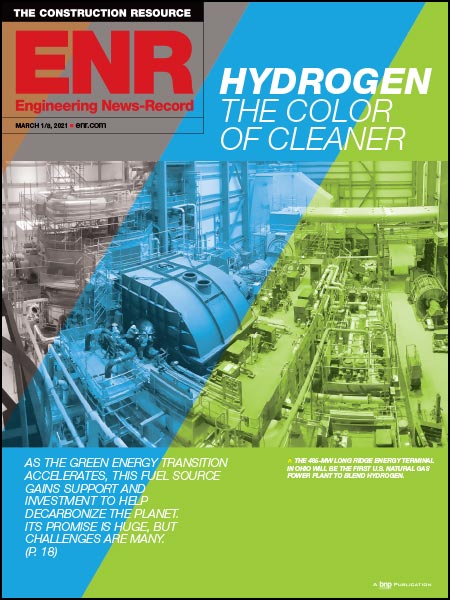Natural-Gas Fuel Cells Power Conn. Manufacturing Facility

Throwing the Switch Legrand North America is using Bloom Energy fuel cells at one of its plants to help meet DOE energy-efficiency goals. Photo by Johanna Knapschaefer
On the edge of a quiet, wooded neighborhood in West Hartford, Conn., on April 18, executives at Legrand North America’s headquarters switched on a 500-kW fuel-cell array outside its decade-old manufacturing facility.
“The fuel-cell [servers] deliver 500 kilowatts of power in a grid-parallel system that produces 50% less CO2 than the U.S. grid, virtually smog-free [and] utilizing no water,” says Ravi Ramanathan, general manager of the 180,000-sq-ft Wiremold manufacturing plant, which produces cable- and wire-management products.
The natural-gas-powered fuel cells are expected to produce, based on 2015 usage, 85% of the electricity used by the 263,000-sq-ft facility, resulting in a $190,000 annual energy savings, Ramanathan says.
Two Bloom Energy ES-5 250-kW solid-oxide fuel-cell (SOFC) servers—comprising multiple rows of black, refrigerator-sized cabinets that each contain stacks of individual fuel cells—generate 500 kW of power. “The outside of the servers are cool to the touch. But deep inside the fuel cells where the reaction occurs, the temperature is about 800°C,” says Bill Luchon, senior manufacturing engineer at Legrand NA.
Each SOFC in a server contains a ceramic compound that acts as an electrolyte to convert natural gas to electricity using a direct electrochemical reaction—without combustion. Fuel passes over the anode as air passes over the cathode; then, oxygen reacts with fuel in the cell, producing energy. Bloom claims its fuel cells require no precious metals, corrosive acids or molten materials.
In 2011, Legrand made a commitment to the U.S. Dept. of Energy to reduce its energy intensity by 25% across 14 of its U.S. facilities within 10 years as part of the “Better Buildings, Better Plants” program. “We actually exceeded the 25% reduction target within just two years, achieving a 28.54% reduction in energy intensity by the end of 2012 [relative to] a 2009 baseline,” says Susan Rochford, Legrand vice president of energy efficiency, sustainability and public policy.
“Finding the bandwidth—the time and energy to think about the topic and do the calculations—was the biggest challenge to making a decision to install the fuel cell,” says John Selldorff, CEO of Legrand North and Central America. “We found it wasn’t as intimidating as it sounds.”
Once permitting was complete, construction took 20 days, Luchon says. Crews installed a gas line, excavated the site and built a concrete pad for the fuel cells. Then, they wired the fuel cells into Legrand’s electrical system and installed data lines, which Bloom uses to monitor and control the fuel cells 24/7. Legrand leases the fuel cells from Bloom, which owns, operates and maintains the fuel cells.
Legrand NA is a manufacturer of electrical and digital building products for global markets. It produces 170,000 products in 90 categories and is a leading maker of electrical switches and outlets.



